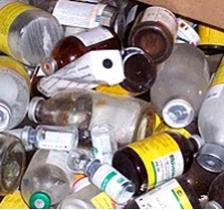Poultry organisation releases statement on antibiotic use

The Poultry Science Association (PSA) has released the following policy statement outlining the organisation’s views on the benefits and risks of the use of antibiotics in food animal agriculture.
PSA developed the statement in conjunction with a number of individuals and the other member organisations of The Federation of Animal Science Societies (FASS) to provide scientific-based guidance on the regulation and usage of antibiotics in animal agriculture amidst concerns about the growing problem of antibiotic-resistant pathogens.
“The Federation of Animal Science Societies (FASS) strongly supports the judicious use of antibiotics in food animal care consistent with the health and welfare of the animals, with preserving the value of antibiotics in protecting human and animal health, and with efficient use of the earth’s resources in food production.”
The statement, along with FASS’s associated rationale and policy objectives, is presented in a document entitled “Preserving the Benefits of Antibiotics for People and Animals,” a copy of which is available online.
The member organizations FASS are the American Dairy Science Association (ADSA), the American Society of Animal Science (ASAS), and PSA.
“There is intense and widespread concern regarding the emergence of human disease causing bacteria for which effective antibiotics are unavailable or limited. The more controversial question for PSA and FASS relates to whether and how drug resistance created in animal agriculture might contribute to the emergence of multiple drug-resistant human pathogens. Here, the data become less clear,” said Dr. Billy Hargis, a professor in the Department of Poultry Science at the University of Arkansas.
While there is a theoretical possibility, according to Dr. Hargis, that normal, non-disease causing bacteria of the intestinal tract of poultry could be introduced into the human intestinal tract, where it could survive and be capable of transmitting resistance to related but disease-causing organisms for humans, the likelihood of such an event is believed by most scientists to be exceedingly remote. A greater concern is the use of first-line human drugs for treating animals.
Dr. Hargis explained: “For example, if a poultry flock is treated for a disease with “Drug X,” and if those birds are infected with a human food-borne pathogen, and if that pathogen persists through processing on a carcass, then it is possible that by mishandling and/or improper cooking this pathogen could be transmitted to a human and cause infection and disease. The concern is the possibility that this pathogen might be resistant to Drug X. If Drug X were the first or a common choice by physicians for treating this human disease, Drug X might therefore fail.”
This hypothetical scenario has generated sufficient concern to lead to the removal of a number of otherwise efficacious antibiotic treatments for poultry. There are, however, a number of effective antimicrobials that are not rational first-line (or even second line) choices for physicians, and some of these chemicals offer no significant risk of interfering with physician-prescribed therapy.
The judicious and proper use of these antimicrobials has been demonstrated to improve animal health and wellbeing, reduce mortality rates from infectious disease, and even reduce the incidence of certain pathogens which can potentially be transmitted from animals to man. In addition, some chemicals that are not of interest in human medicine have been shown to improve feed efficiency and to reduce the environmental footprint of animal agriculture. For these reasons, there are good arguments for continuing the availability of selected antimicrobials for animal agriculture use.
Said PSA President Dr. Mike Lilburn: “The importance of antibiotics to modern animal agriculture is well-documented. However, this use of these drugs must be balanced against the potential for engendering drug-resistance bacteria that cause harm to humans. We are confident that this is a balance that can be struck through the careful development of regulatory systems for supporting antibiotics for disease treatment and a science-based approach to the continued use of antibiotics in food animal populations where it is demonstrably efficacious in treating disease, promoting health, and increasing global food security.”
Related website
The Poultry Science Association (PSA)












